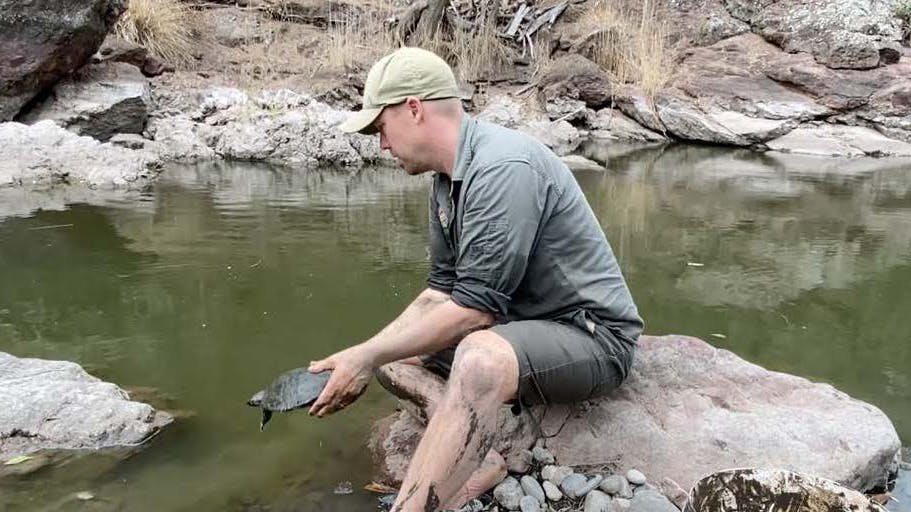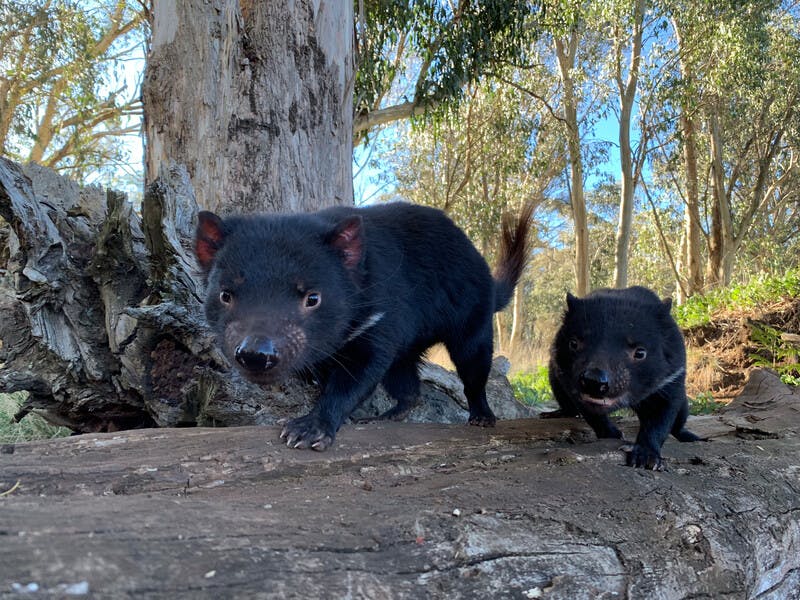australian endemics

Celebrating the Wonderfully Weird and the Wildly Important in Australia
You might recognize the names Lenny, Lisa, Skittles and Jacksen from The Simpsons, but these names are also tied to a historic conservation moment. The four were among the first Tasmanian Devils to live in the wilds of mainland Australia in more than 3,000 years! Their release—along with 22 other Tasmanian Devils in 2020—is just one of a number of notable strategies that Re:wild and our partners are implementing in Australia, which suffers the worst mammal extinction rate in the world.
Australia and its amazing island of Tasmania are home to some of the most unusual and threatened wildlife on the planet, including in the rainforests in the mountains of New South Wales. The Gondwana Rainforest and Barrington Tops National Park are listed as World Heritage sites thanks to their astonishing biodiversity and unique native species. Australia contains two Biodiversity Hotspots: the Southwest Australia Biodiversity Hotspot and the Forests of East Australia Biodiversity Hotspot.
Australia’s forests are home to dozens of endangered species, many found nowhere else on the planet. In addition to the largest subtropical rainforests in the world, Australia boasts more species of animals than any other developed nation, as well as the majority of the world’s marsupial species. In addition to Taz, Eastern Quolls, Brush-tailed and Rufous Bettongs, Southern Brown Bandicoots, Long-nosed Potoroos, Parma Wallabies and other wonderfully weird creatures are all residents of this area—or once were.
The Challenges in the Land Down Under
At least 10% of Australia’s mammal species have gone extinct since European colonization, primarily due to introduced invasive predators that threaten native wildlife. To put this in a global context, one out of three mammal extinctions in the last 400 years have occurred in Australia. And, without swift conservation action, an additional 21% of the continent’s endemic species are predicted to go extinct at a rate of 1 to 2 species per decade.
Habitat destruction—primarily for cattle ranching and cattle feed—and fires that are burning hotter and faster—in large part the result of the drier microclimate that comes with habitat destruction—also pose ongoing threats to Australia’s wildlife, communities and the planet as a whole.
That’s where Re:wild and our partners come in. Not only do we aim to help prevent fires and wildlife extinctions, but we are working together to restore Australia’s ecosystems to a more natural state, bringing back the balance vital to the land down under.
The Re:wild Solution
A healthy ecosystem—one that supports all life on Earth—depends on the presence of wildlife species that each play unique roles. From predators that keep populations of their prey (and invasive species) in check to herbivores that eat seeds and disperse them throughout the forest, every species is vital.
Re:wild is working with a number of partners in Australia, including Aussie Ark, WildArk, Bush Heritage and Australian Wildlife Conservancy, to restore the balance to Australian wilderness. We do this by reforesting critical wildlife habitat, reducing the threat of unnaturally extensive annual fires, and returning keystone species to the wild through conservation breeding and reintroduction programs. In this way, Re:wild and partners are looking to restore ecological integrity to Australia’s ecosystems.
Take the Tassie Devil, for example. Since 2011, Re:wild has been working with Aussie Ark on a conservation breeding program next to the Barrington Tops National Park in New South Wales to breed Tasmanian Devils. In that time, Aussie Ark has become the largest, most successful, and most economical conservation breeding program for the Endangered Tasmanian Devil. All of this work led to the 2020 release of devils into a nearly 1,000-acre wildlife sanctuary. Not only does the reintroduction bode well for the recovery of the Tasmanian Devil, but as a native apex predator and the world’s largest carnivorous marsupial, this territorial species helps control feral cats and foxes that threaten other endangered and endemic species.
The Tasmanian Devil is one of seven cornerstone species critical to Australia’s ecosystem that Aussie Ark and Re:wild plan to reintroduce to the wild sanctuary in the coming years. These species were all chosen to help restore the natural balance and Re:wild Australia:
Eastern Quoll
Brush-tail Rock Wallaby
Rufous Bettong
Long-nosed Potoroo
Parma Wallaby
Southern Brown Bandicoot
One little bandicoot can dig up an elephant’s worth of soil in a year. Together with the other forest floor soil engineers such as bettongs, potoroos, and bilbies, these animals massively reduce fuel load and literally reforest as they plant tree seeds.
Potoroos and their marsupial relatives spread beneficial fungi that maintain tree root health and, through a symbiotic relationship with trees, store more carbon per acre than any other forests on the planet.


